
Food
Storage Tips for Your Organic Groceries
The past year has seen many changes to our routines, especially our shopping trips. Four pounds of organic carrots instead of one, a six-pack of organic romaine hearts instead of three, 2 pounds of organic blueberries instead of 8 ounces. In the early days of the pandemic, I realized how fortunate we are to have the money to buy in bulk and the space to store extra food.
Like many families, we experienced a steep learning curve while storing more perishable foods than we used to buy all at once. My husband and I grew up in farming families and helped prepare organic and nonorganic produce for storage, so this wasn’t a brand-new concept. But relearning how to keep food so it doesn’t spoil has taken some trial and error.
Here are a few of the tips that have worked for us—harvested from friends, relatives, and memory.

Apples
When I was growing up, we had an orchard of around 80 Old World apple trees. In the dead of winter, we’d venture down to the freezing-cold cellar to bring up apples from their bushel baskets. (Granny Smith and Northern Spy kept the longest, so they were my favorite.) Some types of apples just store better than others. All apple varieties need high humidity and above-freezing cold to avoid turning soft and mealy.
A fruit bowl on the counter is fine for a few days, so long as it’s not in direct sun. Using a small spray bottle to mist apples every day or two adds humidity, prevents withering, and extends storage life, especially if you opt to keep your apples in a refrigerator drawer—it’s cold enough in there, but very dry.
Be sure to store apart from any other fruits and vegetables, even in the fridge. Apples emit ethylene gas, which can ripen some types of produce.
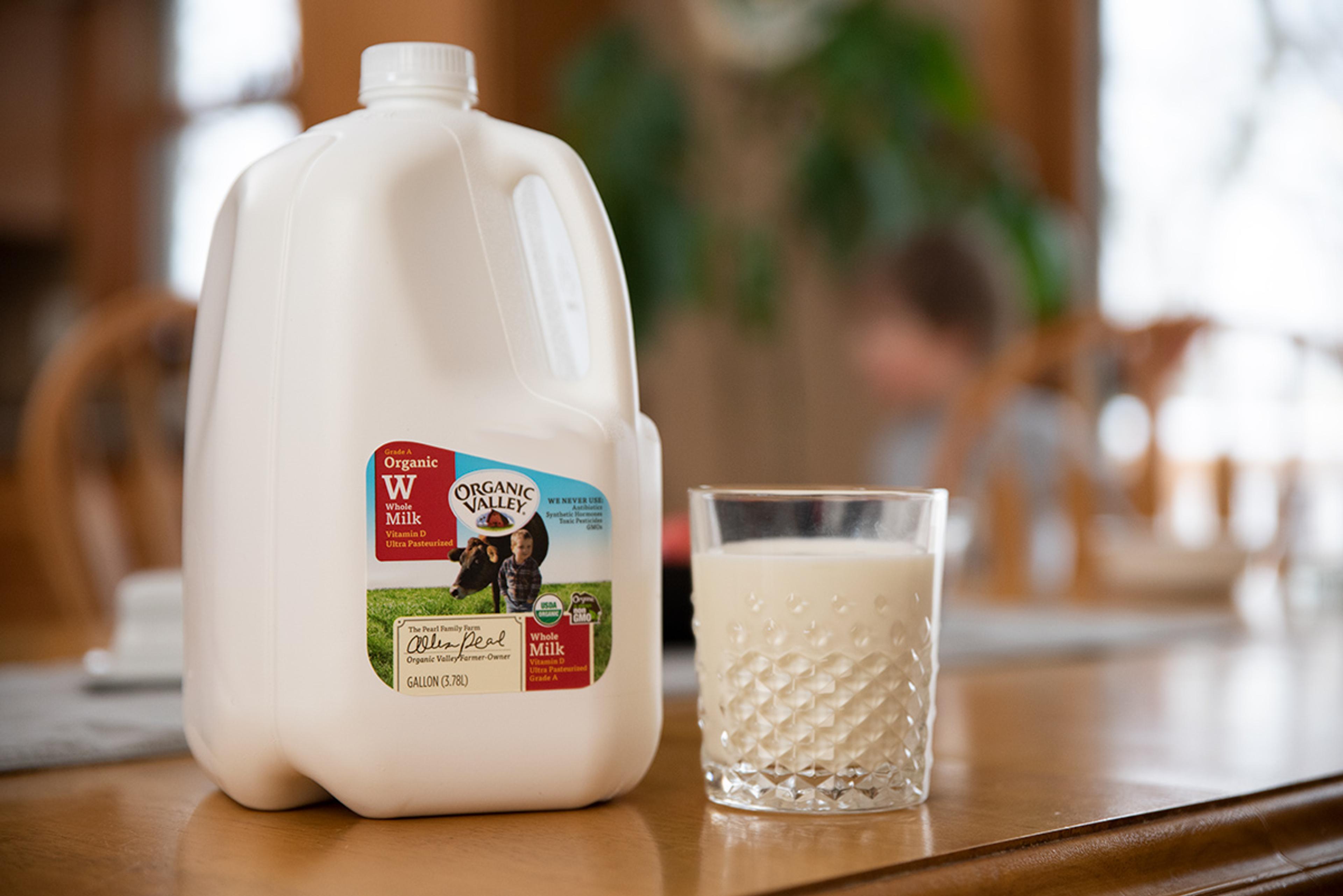
Milk
With my husband and me still working from home, our most frequent trip is to buy milk. Between us and our 10-year-old twins, we go through three or four gallons a week.
As a parent, Organic Valley’s ultra-pasteurized milk is a lifesaver thanks to its longer shelf-life compared to milk that uses regular HTST pasteurization. Organic Valley’s 2% milk, which I buy in two-gallon packs at Costco, keeps in the fridge for a month (of course, be sure to check the expiration date). And Organic Valley Shelf-stable Milk, safely packaged in Tetra Pak cartons, lasts for six to nine months without refrigeration!
Like many families, our budget doesn’t allow for all organic all the time. But the convenience and longevity of organic milk is worth the price, and the taste is a major upside, too.
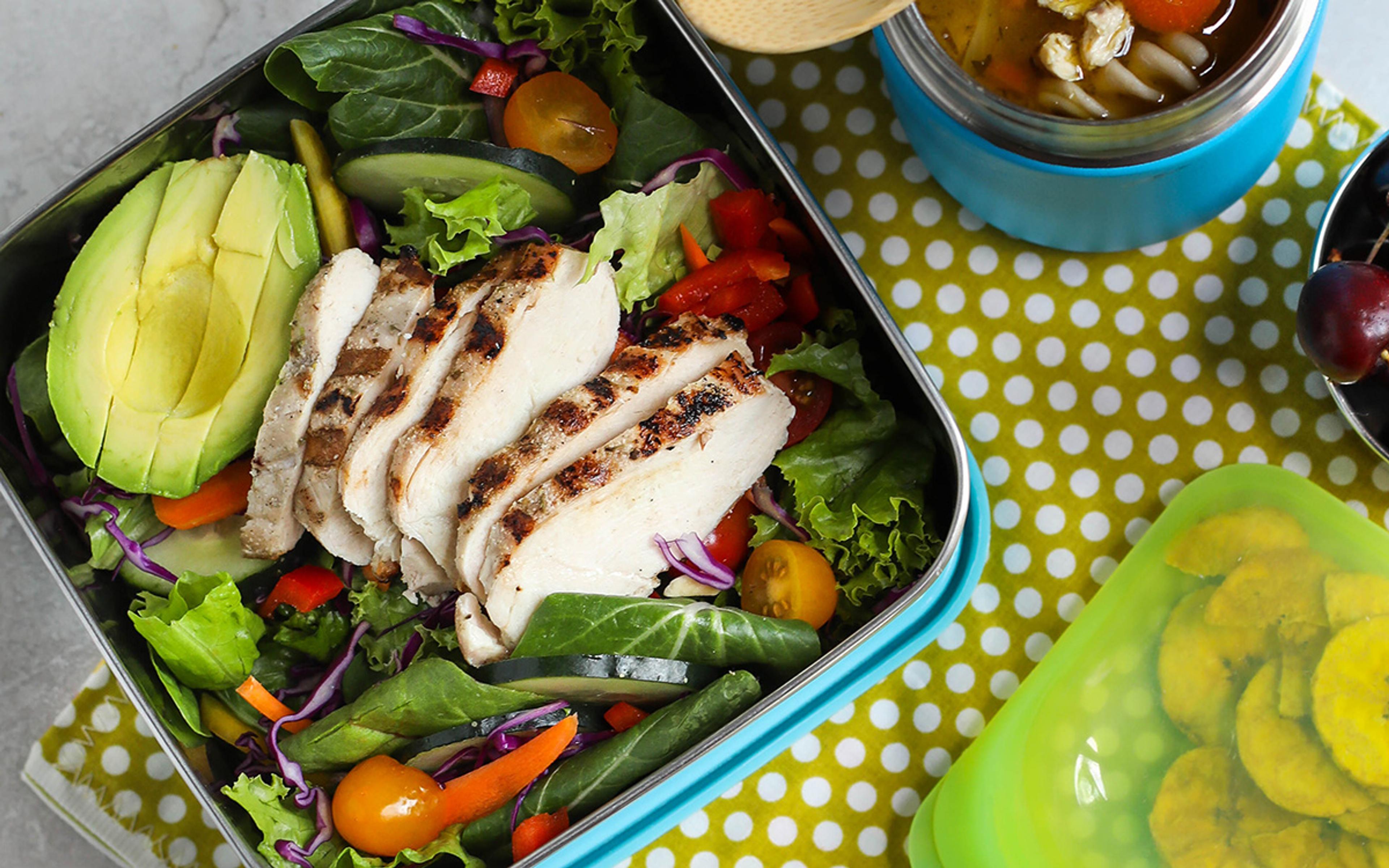
Leafy Greens
To store heads of lettuce for salad, cut off the butt of the lettuce, wash thoroughly under running water, and spin or dry the leaves with paper towels or a clean cloth. If you use a salad spinner, drain the liquid, spin one more time, then just leave the lettuce in the spinner. The remaining moisture is just right for keeping the leaves hydrated for two to five days, depending on the type of lettuce (fragile leaf lettuce and baby spinach wilts faster than robust romaine, iceberg or kale). If you dry the leaves with towels, refrigerate in a plastic zip-top bag with a paper towel or two inside the bag to absorb moisture and keep leaves fresh for longer. (I fold two paper towels to line the bag on one side. Store flat on this side in the refrigerator, allowing water to drain down for absorption.)
To avoid food poisoning, always follow the expiration date on leafy greens. Greens sold in plastic bags or clamshells marked with “triple washed,” “no washing necessary,” or “ready to eat” do not need to be washed again before storing.
For more information on food safety and leafy greens, visit the CDC website.

Berries
Organic berries are a great treat in our house, but they require careful preparation to avoid spoilage. There are several lidded boxes with a slotted insert for storage, but my favorite is the Hutzler Berry Box.
As soon as I unpack groceries, I open the container and check for any mold or spoilage. After removing any berries that look suspect, I tip the whole container into the Berry Box. I used to just rinse them in the slotted box insert and divide into bowls right away, but since we started buying in bulk, I store leftover berries right in the Berry Box. I leave it on the counter for a day or so, and then put it in the fridge with the lid on. (You could easily make your own berry box with a small colander and saucepan or bowl, and store covered in the fridge.)
I’ve also had great results rinsing organic blueberries and drying on paper-lined baking pans before freezing in quart zip-top bags. Raspberries, strawberries, and blackberries absorb water readily, so don’t rinse these before freezing; simply brush off any obvious debris and freeze as usual, then rinse after thawing, if desired.
Use your organic berries in oatmeal or yogurt, or try this simple dessert: Pour half a cup of frozen blueberries into a small bowl, add a quarter-cup of Organic Valley Heavy Cream or Half & Half, sprinkle with raw sugar, and stir to make the best blueberry “ice cream” you’ve ever tasted.
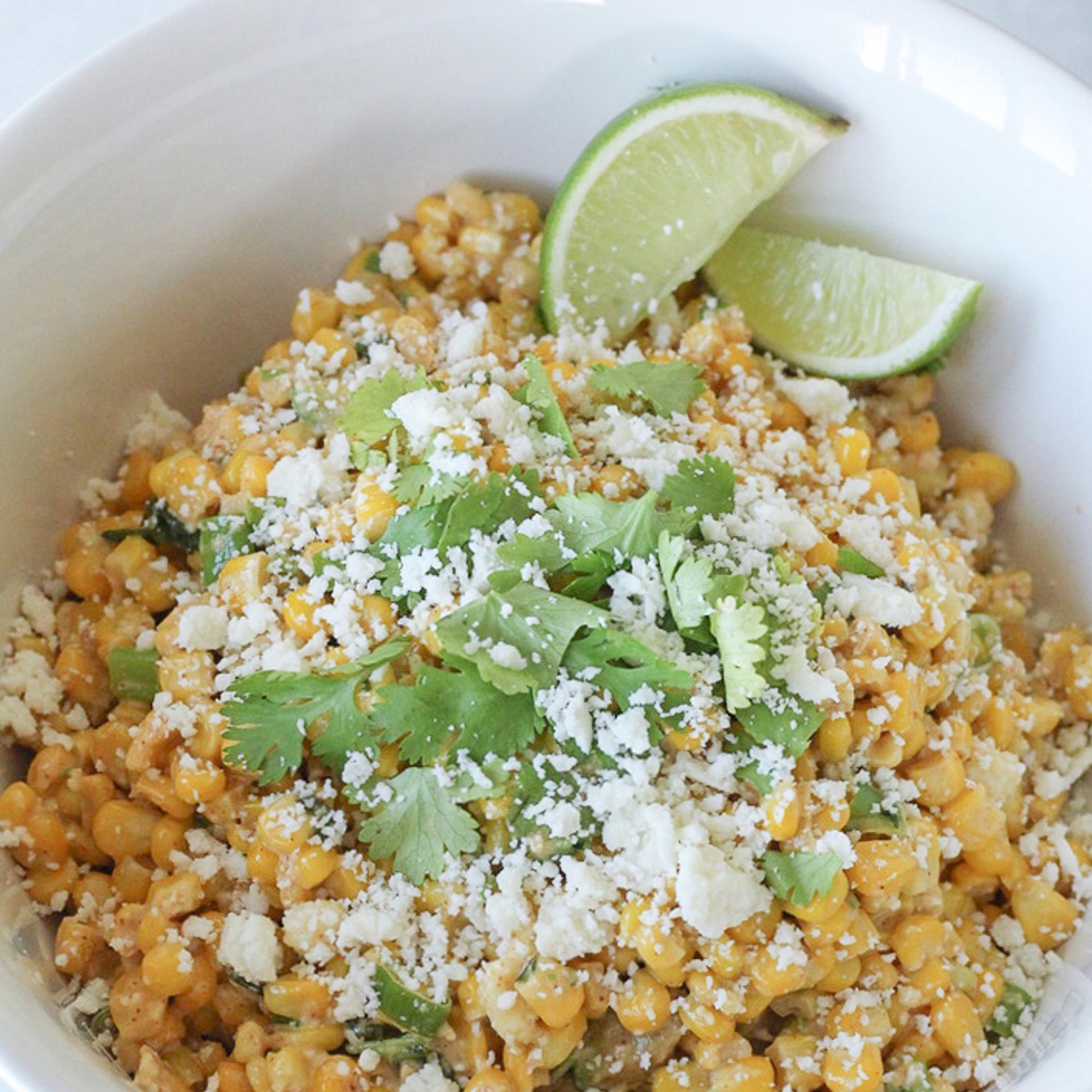
Sweet Corn
It’s hard to believe summer isn’t too far away. When the farm stands have sweet corn again, you can eat it fresh for the best possible taste. Keep it in the refrigerator with the husk on for up to three days or take the kernels off the cob for freezing. Flattening your gallon bags of corn (or other fruits or vegetables, such as peas, green beans, or pitted cherries) and removing excess air before sealing will help you stack bags easily and save freezer space. Use within a year for best flavor.
My parents grow sweet corn every two or three years. When I was young, we’d devote an evening to husking and blanching corn before using an electric knife to remove it from the cob at the dinner table. One of the best foods of my childhood was Silver Queen corn, eaten in delicious little slabs while scooping corn into freezer bags.
Blanching vegetables before freezing kills enzymes that promote decay. It’s a must for the best taste, flavor, and texture when you’re ready to eat it later.
For a comprehensive list of foods you can freeze at home, visit the National Center for Home Food Preservation. This free resource is a gold mine for anyone looking to preserve, can, freeze, smoke, or otherwise store food safely.
My parents also highly recommend the book Stocking Up, by Carol Hupping, now in its third edition. They’ve used it with great success for more than 40 years.
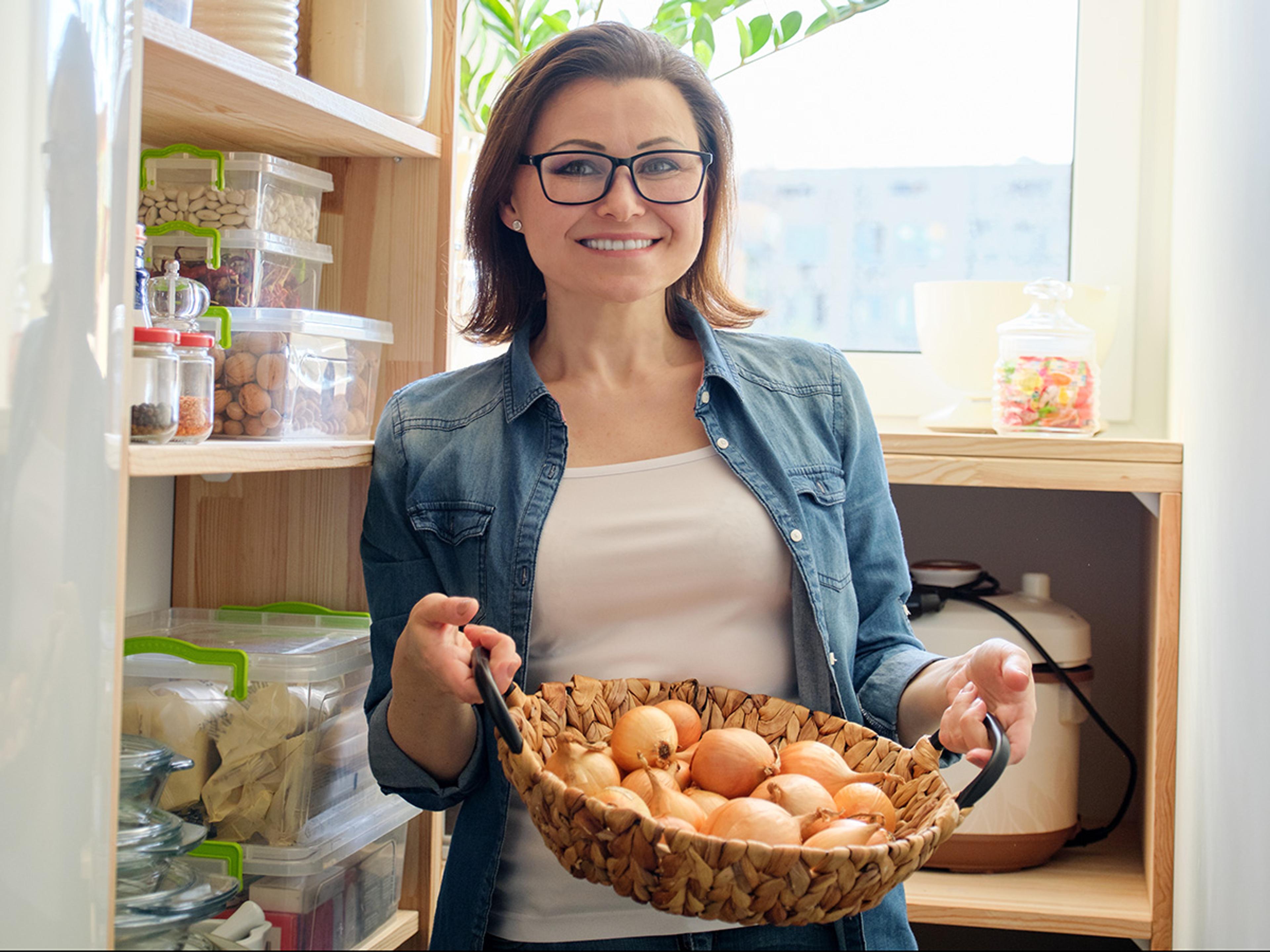
Onions
Few things smell worse than a rotten onion! After harvest, onions are “cured” to keep them from spoiling. Here’s an excellent article about home-curing homegrown onions for storage up to 10 to 12 months.
Store-bought onions will already be cured, so as soon as onions reach your home, they should be stored separately from all other fruits and vegetables. Keep them very dry, out of the light, and well away from potatoes. Like apples, onions emit ethylene gas. And potatoes release moisture, raising the humidity in an area. So these two aren’t good storage buddies. Rotten potatoes smell just as bad as rotten onions.
The refrigerator is OK for sliced onions that will be used soon but doesn’t work for long-term storage. If you have a cellar, store onions in a way that allows for good air circulation: there is the old pantyhose trick, but we always used a hanging basket. Wicker or jute baskets also work well and have a nice rustic look.
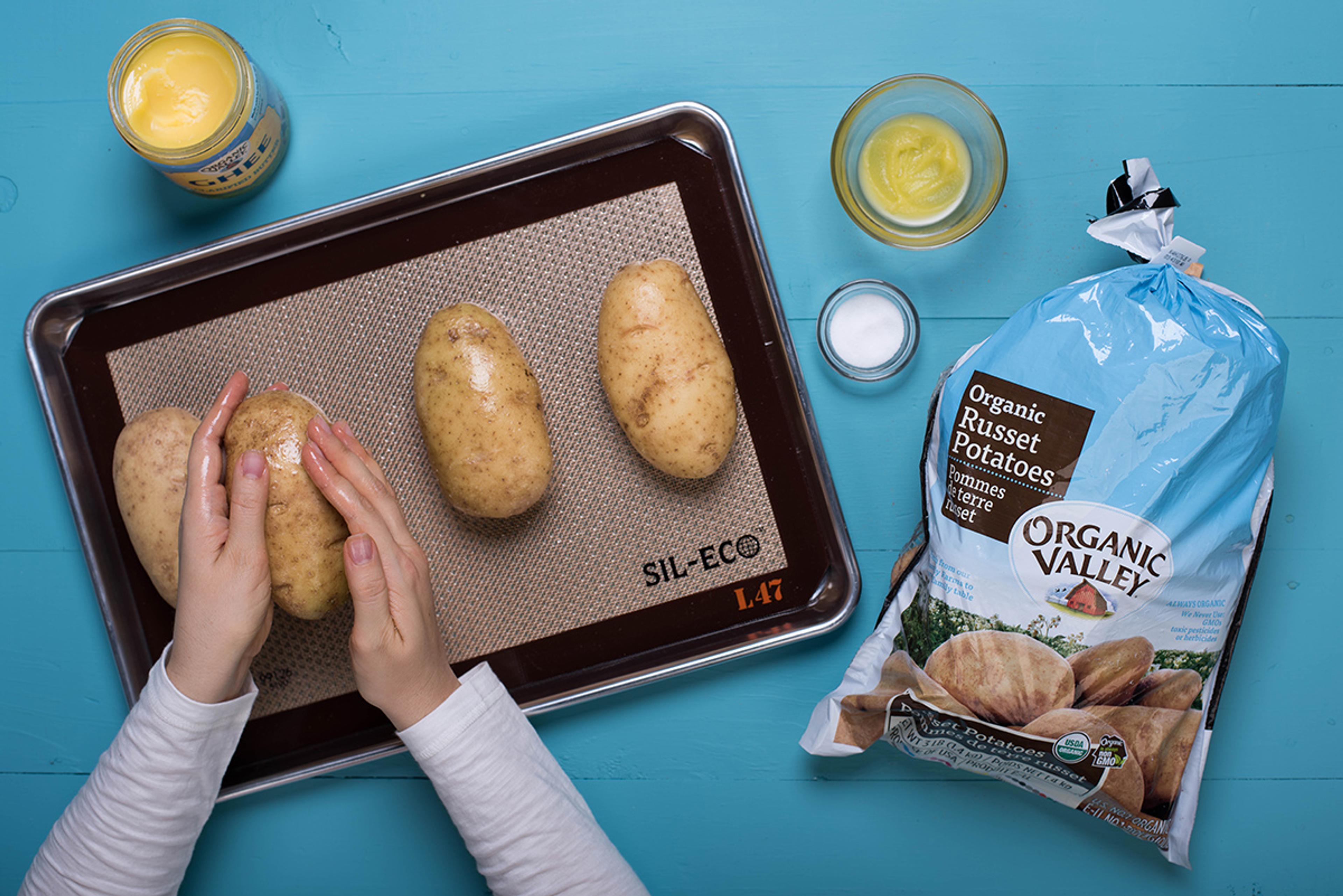
Potatoes
The humble potato is surprisingly sensitive to storage conditions. Under-the-sink storage is often right next to a dishwasher, creating too much heat. Refrigerators don’t allow for the right humidity and air circulation, and dry air causes potatoes to shrink. Too cold for too long? The starch in potatoes turns to sugar and frying them will yield very brown french fries. Too warm, and you’ll have sprouted potatoes.
My father-in-law, who co-owns and operates a seed potato farm in Michigan, recommends keeping store-bought potatoes in the bag and storing somewhere cool and dark. This will prevent them from sprouting too quickly or turning green (a result of exposure to sunlight) and becoming inedible.
If you (or your kids!) are sick of plain old french fries and potato chips, try potatoes roasted in Organic Valley Ghee, a type of clarified butter. Organic Valley Ghee is lactose-free, casein-free, and shelf-stable. Sage or rosemary added to roasted or fried potatoes will complement ghee’s nutty, caramelized flavor.

Fresh Herbs
Tricks that work for greens also work for herbs—especially hard, woody herbs, such as chives, oregano, sage, rosemary, and thyme. Wash with cool running water, spin or dry with paper towels or a clean cloth, wrap loosely in damp paper towels, and store in a sealed container or zip-top bag in the refrigerator. Re-dampen paper towels as needed.
Leafy herbs, such as basil, cilantro, mint, and parsley, can also be stored in Mason jars. Wash and dry each bunch of herbs, then gather the stems together like cut flowers. Add fresh, cool water to each jar, just enough to cover the trimmed ends of each little herb bouquet. Cover with plastic or simply screw on the lid. Be sure to replace the water and re-trim the stems every two days or so. If your bunch of herbs is too big for a jar, they also keep very well in a cup of water without a top—just top off the water frequently. Leafy herbs will keep like this for easily a week, and sometimes longer—much better than the usual wilty mess after a day or two!
Paper made specifically for produce is also useful. We’ve used it for berries and herbs with great success, cutting pieces around 4 inches square and adding them to storage bags (along with paper towels). Cutting a round piece and leaving it at the bottom of a countertop fruit bowl will extend the life of countertop apples, pears, and other fruits.
Proper food storage saves money and will eliminate unwelcome surprises (and smells!) when you are hungry for a crisp apple or eager to prepare a tasty meal. Now it’s time to get creative in the kitchen using your well-stored food! Check out these delicious recipes and enjoy!
Related Articles
- Tags:
- cooking & entertaining,
- organic & sustainable living,
- shopping,
- meal prep

















